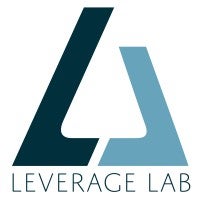The web is dying. Not the internet. That will endure. But the web as we have known it for three decades is on its way out. The ecosystem of interconnected pages, search-driven discovery and advertising-supported content is being systematically dismantled by the very companies that built it.
As the Wall Street Journal reported this month, “The AI armageddon is here for online news publishers. Chatbots are replacing Google searches, eliminating the need to click on blue links and tanking referrals to news sites.”
Google’s AI summaries now appear in more than 50% of searches, providing zero-click answers that bypass publisher websites entirely. OpenAI is building browsers designed to eliminate the need to visit web pages. Firefox is planning to offer AI summaries when you hover over links – no need to click.
Even companies that have successfully diversified are planning for total search traffic loss. According to the WSJ, Nicholas Thompson, The Atlantic’s CEO, recently told staff to assume Google traffic would drop toward zero, requiring fundamental business model evolution. When Dotdash merged with Meredith in 2021, Google search represented around 60% of traffic. Today, it’s about one-third. We are getting close to what Neil Vogel, CEO of Dotdash Meredith, called “Google Zero” on a recent Rebooting podcast.
The AI summary problem
Recent analysis from Ahrefs shows that when AI Overviews appear in search results, the first organic link loses an average of 34.5% of clicks. Major publishers like ProPublica and BuzzFeed have seen the share of their keywords triggering AI Overviews increase by over 150% in just six months.
This isn’t just about lost traffic; it’s about lost revenue and relationship-building opportunities. Every visitor who gets their answer from an AI summary instead of visiting your site is a potential subscriber, event attendee or community member you will never reach.
Three strategies to adapt to “Google Zero”
Here are three critical strategies that separate survivors from casualties in this transition:
1. Adopt an audience-first strategy
As publishers lose search traffic, they must monetize owned audiences instead of rented traffic. This means transitioning from a traffic-dependent to an audience-first business model:
- Build meaningful reader relationships: Move beyond anonymous pageviews to create ongoing connections through newsletters, community engagement and interactive content that encourages return visits.
- Drive first-party data interactions: Use progressive profiling, gated content and value exchanges to gradually learn more about each reader’s interests, professional needs and engagement patterns.
- Optimize for lifetime value over traffic volume: Segment users based on behavior and relationship potential and treat them accordingly. Unknown visitors get aggressive monetization while return visitors receive relationship-building experiences with reduced ads and newsletter promotion. Known subscribers get premium experiences optimized for conversion to paid services or event attendance.
- Know your readers across platforms: Recognize the same reader whether they’re engaging on mobile, attending virtual events on their laptop or downloading resources from their office desktop to build complete relationship profiles.
This approach recognizes that sustainable revenue comes from deep relationships with readers who value what you uniquely provide, not from hoping platforms send you traffic.
2. Become an irreplaceable brand voice
Publishers must become trusted industry authorities that human audiences actively seek out. This means competing on trust and expertise rather than traffic volume while building deep, data-rich relationships with readers.
Successful publishers will focus on creating compelling, return-worthy content. Developing distinctive editorial voices, unique insights and exclusive access that gives readers specific reasons to come back to your platform rather than consuming information elsewhere.
When your brand voice becomes irreplaceable, you don’t compete for attention; attention comes to you. The goal is to transform from a traffic destination into a trusted relationship where readers actively choose your perspective over generic AI summaries or competitor content.
3. Build the AI content supply chain
AI agents need structured, high-quality information. Publishers should position themselves as premium suppliers to AI platforms through wholesale content licensing at scale.
This requires creating content that serves dual audiences: structured data feeds that AI agents can easily consume and cite, wrapped in a distinctive editorial voice that builds human brand loyalty. This creates a challenging dichotomy: what makes content discoverable by AI agents isn’t what creates compelling reading experiences for humans. Publishers must master both. It’s like being a wholesale food distributor that sells to restaurants while also having a popular restaurant on site.
Companies like ProRata are building technology that analyzes AI chatbot outputs to identify which publisher sources were used and creates compensation frameworks. Publishers that establish themselves as trusted suppliers now will be positioned to benefit when these attribution systems mature.
The goal isn’t fighting AI; it’s becoming an essential part of the information supply chain for AI platforms.
The infrastructure reality
None of these strategies work without sophisticated audience intelligence capabilities. Publishers need systems that:
- Connect reader behavior across all touch points into unified profiles
- Serve different content and offers based on what you know about each visitor
- Identify and nurture high-value relationships regardless of traffic sources
- Create structured content optimized for both human readers and AI consumption
Publishers that lack this infrastructure are vulnerable to “Google Zero.”
The choice ahead
AI agents are already reshaping how information flows through the internet. The question isn’t whether the traffic era will end; it’s whether publishers will build the capabilities needed to thrive in a “Google Zero” world.
The web as we’ve known it is dying. The publishers who survive won’t be those who fight the changes, but those who recognize three fundamental shifts: from traffic dependence to audience relationships, from commodity content to irreplaceable brand voice, and both retail traffic competition and wholesale content supply.
“The Sell Sider” is a column written by the sell side of the digital media community.
Follow Leverage Lab and AdExchanger on LinkedIn.

















